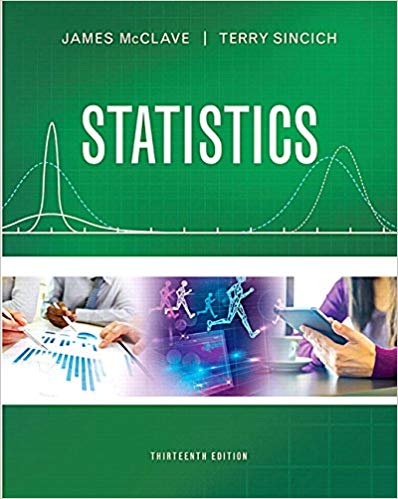Refer to the Acoustical Science & Technology (Vol. 35, 2014) study of irrelevant speech effects, Exercise 2.104
Question:
Refer to the Acoustical Science & Technology (Vol. 35, 2014) study of irrelevant speech effects, Exercise 2.104 (p. 77). Recall that subjects performed a memorization task under two conditions: (1) with irrelevant background speech and (2) in silence. The difference in the error rates for the two conditions-called the relative difference in error rate (RDER)-was computed for each subject. Descriptive statistics for the RDER values are shown in the MINITAB printout on p. 103. The media has requested that the researchers provide a single statistic that best represents the center of the distribution of RDER values. This statistic will be used to publicize the study findings.
.png)
a. Suppose you are in support of the irrelevant speech effect theory. Consequently, you want to magnify the difference in error rates between the two conditions. Which statistic would you select, and why?
b. Suppose you do not believe in the irrelevant speech effect theory. Consequently, you want to diminish the difference in error rates between the two conditions. Which statistic would you select, and why?
c. If you truly are neutral in regard to the irrelevant speech effect theory, explain why it is better to obtain descriptive statistics for the absolute difference between error rates (i.e., the absolute value of RDER).
The word "distribution" has several meanings in the financial world, most of them pertaining to the payment of assets from a fund, account, or individual security to an investor or beneficiary. Retirement account distributions are among the most...
Step by Step Answer:






